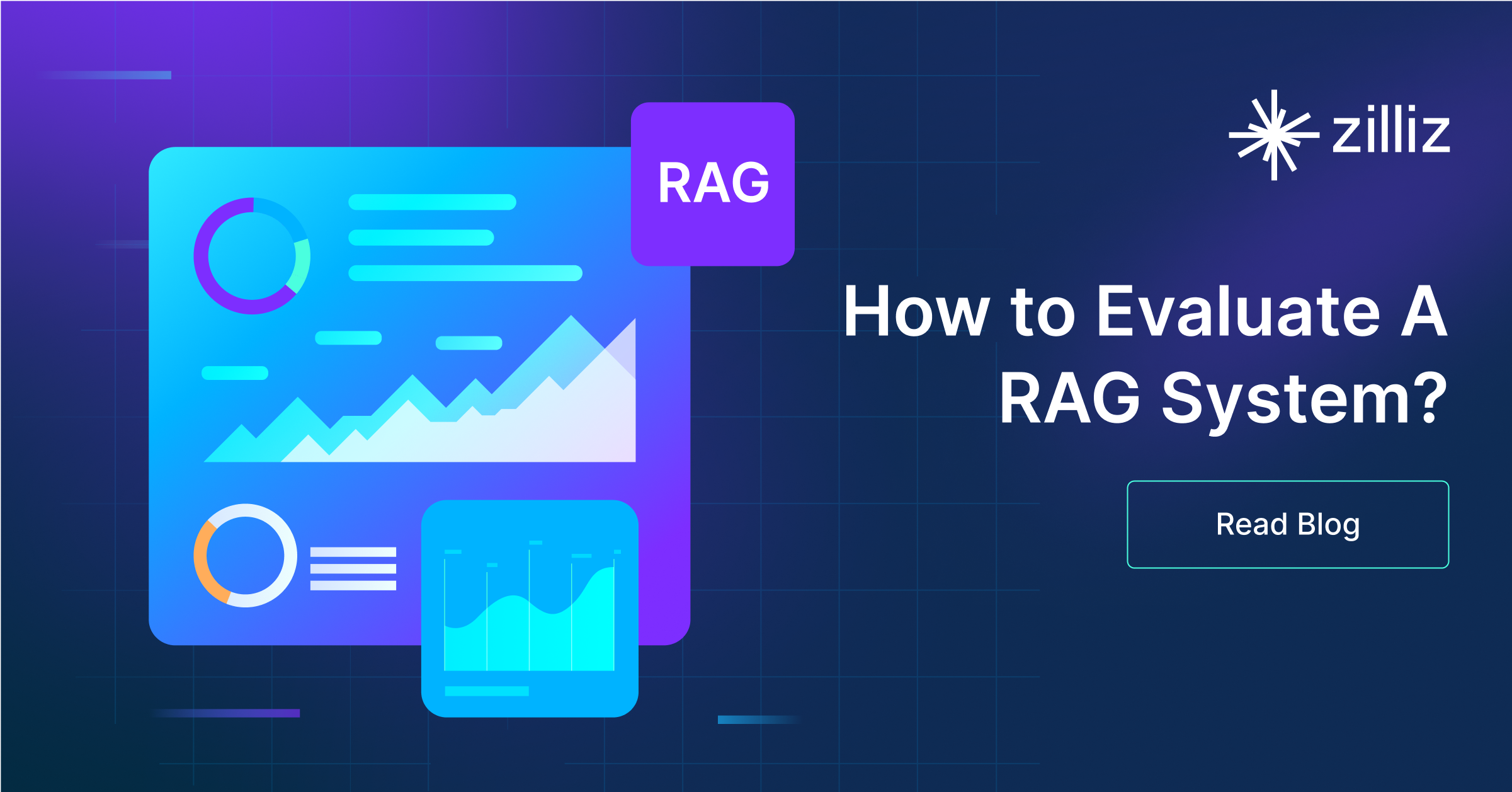Build RAG Chatbot with Llamaindex, Milvus, OpenAI GPT-4o mini, and Cohere embed-multilingual-v2.0
Introduction to RAG
Retrieval-Augmented Generation (RAG) is a game-changer for GenAI applications, especially in conversational AI. It combines the power of pre-trained large language models (LLMs) like OpenAI’s GPT with external knowledge sources stored in vector databases such as Milvus and Zilliz Cloud, allowing for more accurate, contextually relevant, and up-to-date response generation. A RAG pipeline usually consists of four basic components: a vector database, an embedding model, an LLM, and a framework.
Key Components We'll Use for This RAG Chatbot
This tutorial shows you how to build a simple RAG chatbot in Python using the following components:
- Llamaindex: a data framework that connects large language models (LLMs) with various data sources, enabling efficient retrieval-augmented generation (RAG). It helps structure, index, and query private or external data, optimizing LLM applications for search, chatbots, and analytics.
- Milvus: An open-source vector database optimized to store, index, and search large-scale vector embeddings efficiently, perfect for use cases like RAG, semantic search, and recommender systems. If you hate to manage your own infrastructure, we recommend using Zilliz Cloud, which is a fully managed vector database service built on Milvus and offers a free tier supporting up to 1 million vectors.
- OpenAI GPT-4o mini: A streamlined, cost-efficient variant of GPT-4, optimized for scalable AI applications. It balances high performance with reduced computational demands, offering fast response times and lower costs. Ideal for real-time chatbots, content generation, and integration into resource-constrained environments like mobile apps or high-volume transactional systems.
- Cohere embed-multilingual-v2.0: A multilingual embedding model designed to convert text in over 100 languages into high-dimensional vectors. It excels in capturing semantic relationships across diverse languages, enabling robust cross-lingual search, content recommendation, and multilingual NLP applications. Ideal for global enterprises needing scalable, language-agnostic text analysis and retrieval solutions.
By the end of this tutorial, you’ll have a functional chatbot capable of answering questions based on a custom knowledge base.
Note: Since we may use proprietary models in our tutorials, make sure you have the required API key beforehand.
Step 1: Install and Set Up Llamaindex
pip install llama-index
Step 2: Install and Set Up OpenAI GPT-4o mini
%pip install llama-index llama-index-llms-openai
from llama_index.llms.openai import OpenAI
llm = OpenAI(
model="gpt-4o-mini",
# api_key="some key", # uses OPENAI_API_KEY env var by default
)
Step 3: Install and Set Up Cohere embed-multilingual-v2.0
%pip install llama-index-embeddings-cohere
from llama_index.embeddings.cohere import CohereEmbedding
embed_model = CohereEmbedding(
api_key=cohere_api_key,
model_name="embed-multilingual-v2.0",
)
Step 4: Install and Set Up Milvus
pip install llama-index-vector-stores-milvus
from llama_index.core import VectorStoreIndex, StorageContext
from llama_index.vector_stores.milvus import MilvusVectorStore
vector_store = MilvusVectorStore(
uri="./milvus_demo.db",
dim=1536, # You can replace it with your embedding model's dimension.
overwrite=True,
)
Step 5: Build a RAG Chatbot
Now that you’ve set up all components, let’s start to build a simple chatbot. We’ll use the Milvus introduction doc as a private knowledge base. You can replace it with your own dataset to customize your RAG chatbot.
import requests
from llama_index.core import SimpleDirectoryReader
# load documents
url = 'https://raw.githubusercontent.com/milvus-io/milvus-docs/refs/heads/v2.5.x/site/en/about/overview.md'
example_file = 'example_file.md' # You can replace it with your own file paths.
response = requests.get(url)
with open(example_file, 'wb') as f:
f.write(response.content)
documents = SimpleDirectoryReader(
input_files=[example_file]
).load_data()
print("Document ID:", documents[0].doc_id)
storage_context = StorageContext.from_defaults(vector_store=vector_store)
index = VectorStoreIndex.from_documents(
documents, storage_context=storage_context, embed_model=embed_model
)
query_engine = index.as_query_engine(llm=llm)
res = query_engine.query("What is Milvus?") # You can replace it with your own question.
print(res)
Example output
Milvus is a high-performance, highly scalable vector database designed to operate efficiently across various environments, from personal laptops to large-scale distributed systems. It is available as both open-source software and a cloud service. Milvus excels in managing unstructured data by converting it into numerical vectors through embeddings, which facilitates fast and scalable searches and analytics. The database supports a wide range of data types and offers robust data modeling capabilities, allowing users to organize their data effectively. Additionally, Milvus provides multiple deployment options, including a lightweight version for quick prototyping and a distributed version for handling massive data scales.
Optimization Tips
As you build your RAG system, optimization is key to ensuring peak performance and efficiency. While setting up the components is an essential first step, fine-tuning each one will help you create a solution that works even better and scales seamlessly. In this section, we’ll share some practical tips for optimizing all these components, giving you the edge to build smarter, faster, and more responsive RAG applications.
LlamaIndex optimization tips
To optimize LlamaIndex for a Retrieval-Augmented Generation (RAG) setup, structure your data efficiently using hierarchical indices like tree-based or keyword-table indices for faster retrieval. Use embeddings that align with your use case to improve search relevance. Fine-tune chunk sizes to balance context length and retrieval precision. Enable caching for frequently accessed queries to enhance performance. Optimize metadata filtering to reduce unnecessary search space and improve speed. If using vector databases, ensure indexing strategies align with your query patterns. Implement async processing to handle large-scale document ingestion efficiently. Regularly monitor query performance and adjust indexing parameters as needed for optimal results.
Milvus optimization tips
Milvus serves as a highly efficient vector database, critical for retrieval tasks in a RAG system. To optimize its performance, ensure that indexes are properly built to balance speed and accuracy; consider utilizing HNSW (Hierarchical Navigable Small World) for efficient nearest neighbor search where response time is crucial. Partitioning data based on usage patterns can enhance query performance and reduce load times, enabling better scalability. Regularly monitor and adjust cache settings based on query frequency to avoid latency during data retrieval. Employ batch processing for vector insertions, which can minimize database lock contention and enhance overall throughput. Additionally, fine-tune the model parameters by experimenting with the dimensionality of the vectors; higher dimensions can improve retrieval accuracy but may increase search time, necessitating a balance tailored to your specific use case and hardware infrastructure.
OpenAI GPT-4o Mini optimization tips
To optimize the OpenAI GPT-4o Mini in a RAG setup, ensure concise input formatting by truncating or summarizing retrieved documents to stay within token limits. Use precise query phrasing to improve retrieval relevance, and filter redundant context to reduce noise. Leverage temperature and max_tokens parameters to balance creativity and focus. Cache frequent queries to minimize API calls and latency. Regularly validate outputs against ground truth to refine prompts and retrieval logic. Prioritize structured templates for consistent responses and implement error handling for rate limits or timeouts.
Cohere embed-multilingual-v2.0 optimization tips
To optimize Cohere embed-multilingual-v2.0 in RAG, preprocess text by normalizing languages (lowercasing, removing diacritics) and chunking documents into 512-token segments for compatibility. Use domain-specific fine-tuning via Cohere’s API to align embeddings with specialized vocabularies. Cache frequently accessed embeddings to reduce latency and costs. Batch embedding requests for bulk processing. Align query language with document language for improved retrieval accuracy, and apply L2 normalization before similarity calculations. Monitor retrieval hit rates to refine chunking strategies and fine-tuning datasets iteratively.
By implementing these tips across your components, you'll be able to enhance the performance and functionality of your RAG system, ensuring it’s optimized for both speed and accuracy. Keep testing, iterating, and refining your setup to stay ahead in the ever-evolving world of AI development.
RAG Cost Calculator: A Free Tool to Calculate Your Cost in Seconds
Estimating the cost of a Retrieval-Augmented Generation (RAG) pipeline involves analyzing expenses across vector storage, compute resources, and API usage. Key cost drivers include vector database queries, embedding generation, and LLM inference.
RAG Cost Calculator is a free tool that quickly estimates the cost of building a RAG pipeline, including chunking, embedding, vector storage/search, and LLM generation. It also helps you identify cost-saving opportunities and achieve up to 10x cost reduction on vector databases with the serverless option.
 Calculate your RAG cost
Calculate your RAG cost
What Have You Learned?
Congratulations on making it through this tutorial and diving deep into the exciting world of Retrieval-Augmented Generation (RAG) systems! By combining the powerful framework of LlamaIndex, the efficient vector database Milvus, cutting-edge OpenAI's GPT-4o mini, and the versatile Cohere’s embed-multilingual-v2.0 embedding model, you’ve unlocked the ability to build a robust RAG pipeline. You've seen firsthand how each component plays a vital role: LlamaIndex structures your data and organizes your retrievals, Milvus smoothly handles vector searches for rapid information retrieval, and the GPT-4o mini and Cohere embedding model work together to effectively generate responses that are not only relevant but contextually rich. That’s an impressive toolkit to have at your disposal!
What’s even more exciting is that you've gained insights into optimization tips that can enhance the performance of your RAG applications, giving you a competitive edge. Whether it’s fine-tuning your model settings or understanding vector database configurations, these little tweaks can make a world of difference. Plus, with the free RAG cost calculator, you'll be equipped to analyze your application's efficiency and scalability! Now's your time to shine! Take your newfound knowledge, get your hands dirty, and start building, optimizing, and innovating your very own RAG applications. The possibilities are endless, and the world is waiting to see what you create!
Further Resources
🌟 In addition to this RAG tutorial, unleash your full potential with these incredible resources to level up your RAG skills.
- How to Build a Multimodal RAG | Documentation
- How to Enhance the Performance of Your RAG Pipeline
- Graph RAG with Milvus | Documentation
- How to Evaluate RAG Applications - Zilliz Learn
- Generative AI Resource Hub | Zilliz
We'd Love to Hear What You Think!
We’d love to hear your thoughts! 🌟 Leave your questions or comments below or join our vibrant Milvus Discord community to share your experiences, ask questions, or connect with thousands of AI enthusiasts. Your journey matters to us!
If you like this tutorial, show your support by giving our Milvus GitHub repo a star ⭐—it means the world to us and inspires us to keep creating! 💖
- Introduction to RAG
- Key Components We'll Use for This RAG Chatbot
- Step 1: Install and Set Up Llamaindex
- Step 2: Install and Set Up OpenAI GPT-4o mini
- Step 3: Install and Set Up Cohere embed-multilingual-v2.0
- Step 4: Install and Set Up Milvus
- Step 5: Build a RAG Chatbot
- Optimization Tips
- RAG Cost Calculator: A Free Tool to Calculate Your Cost in Seconds
- What Have You Learned?
- Further Resources
- We'd Love to Hear What You Think!
Content
Vector Database at Scale
Zilliz Cloud is a fully-managed vector database built for scale, perfect for your RAG apps.
Try Zilliz Cloud for Free


